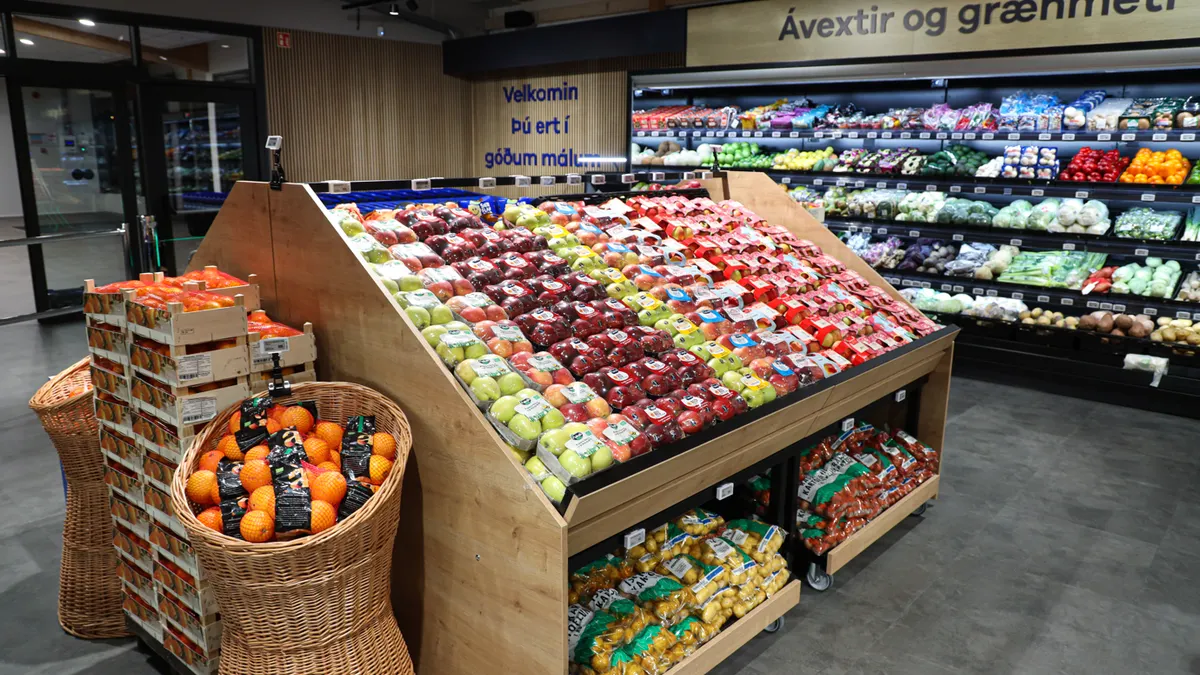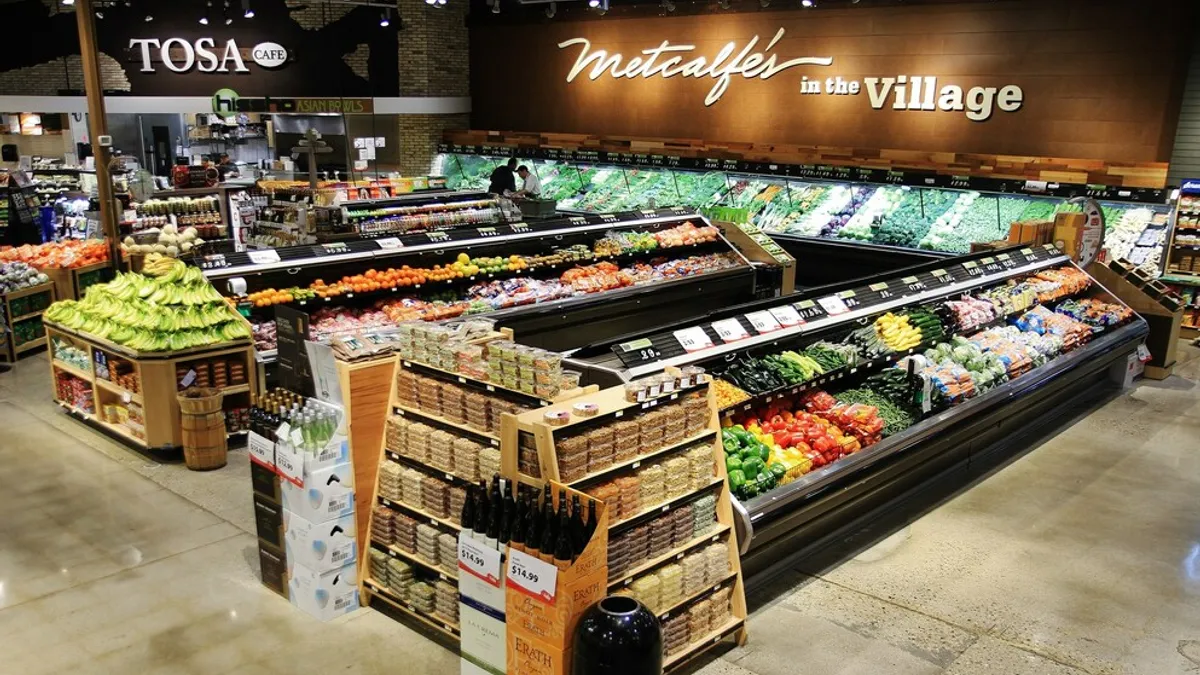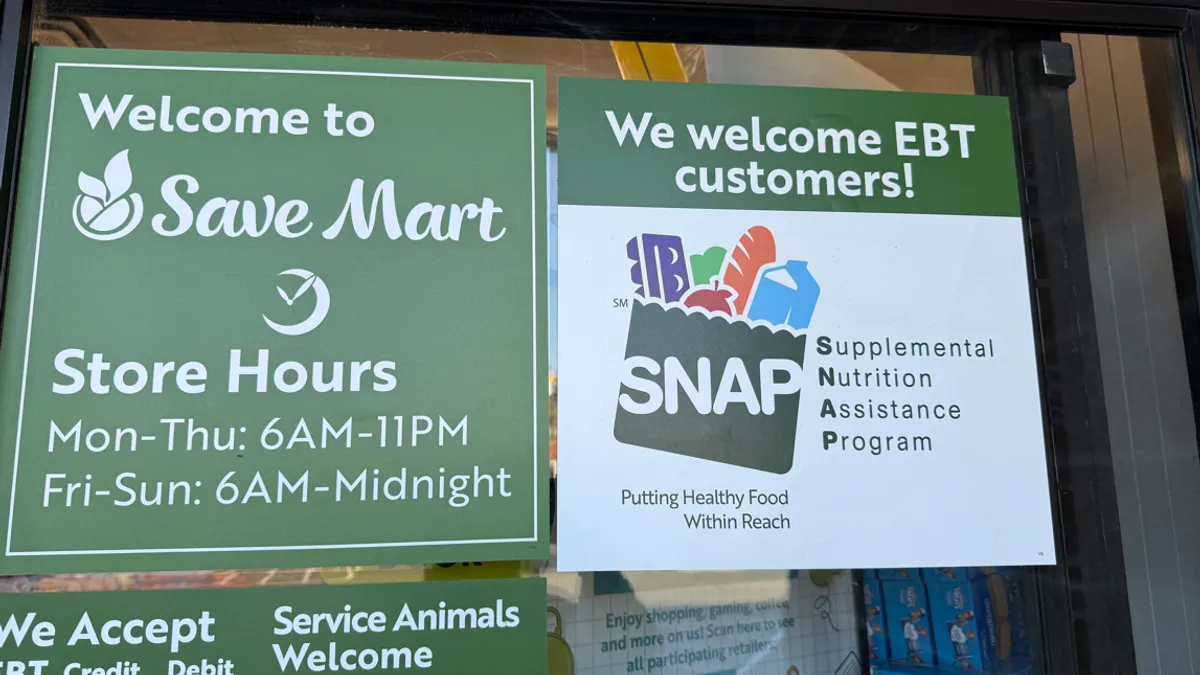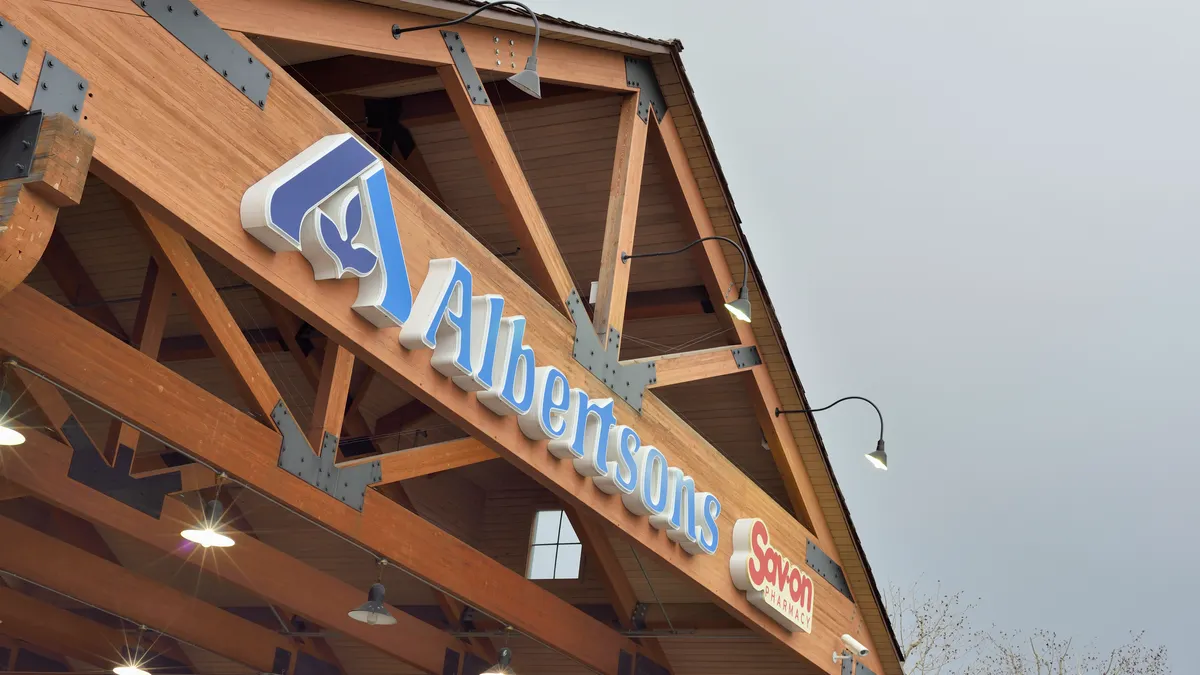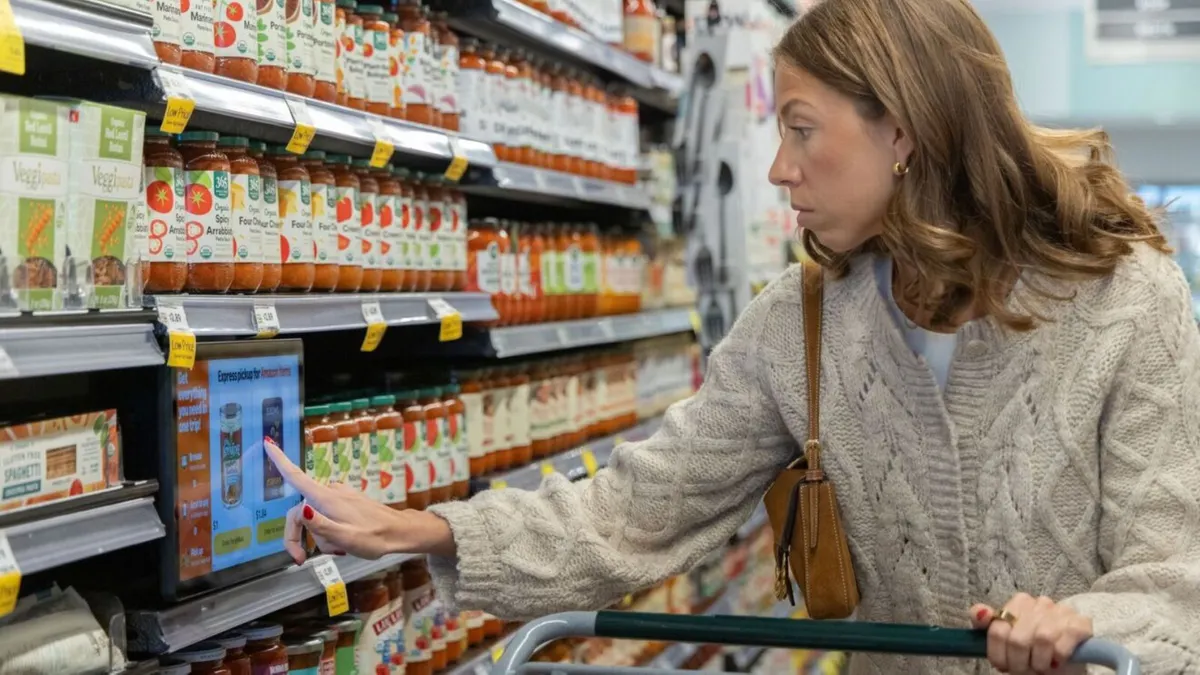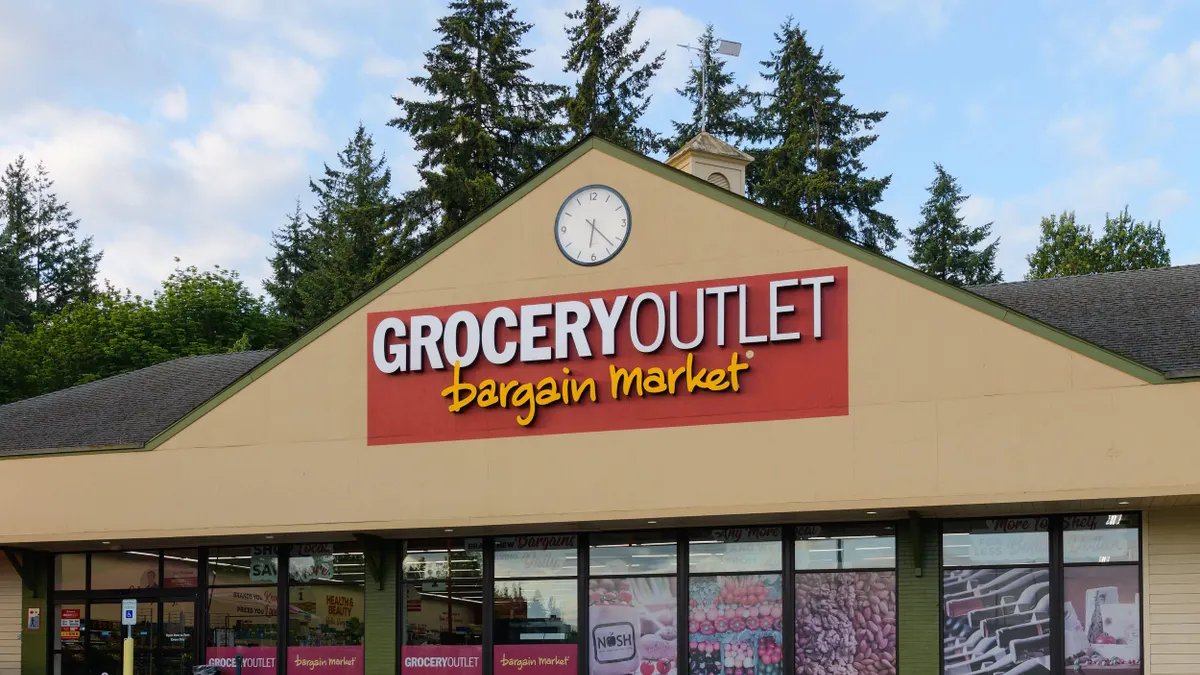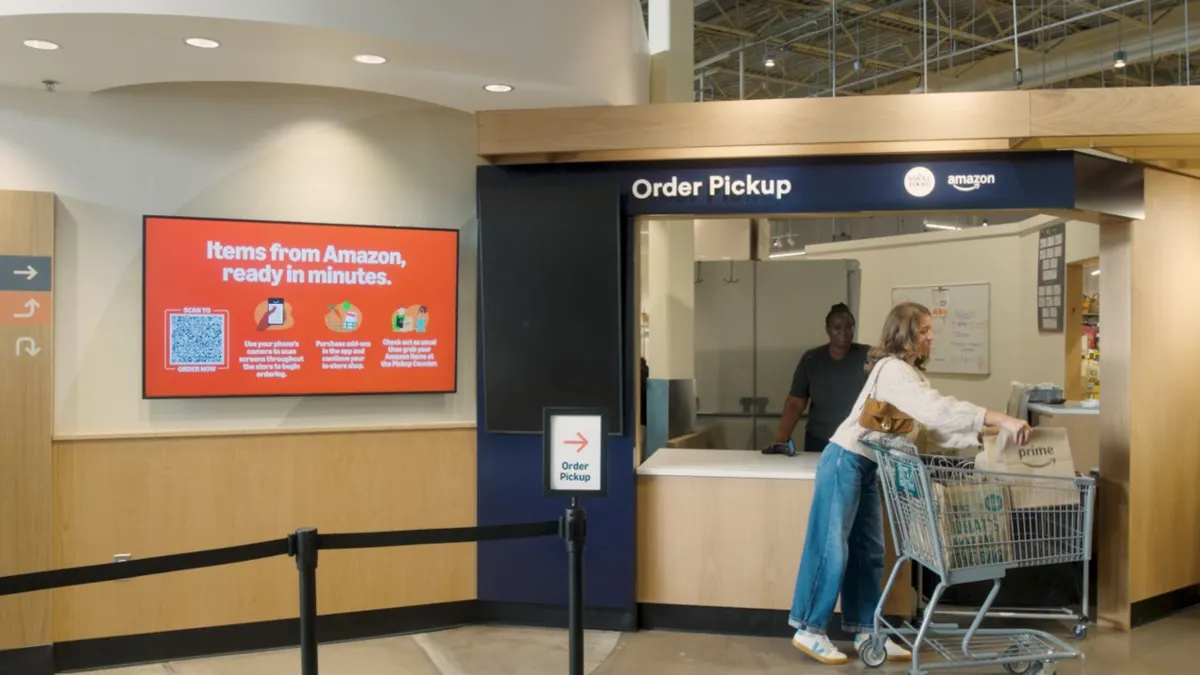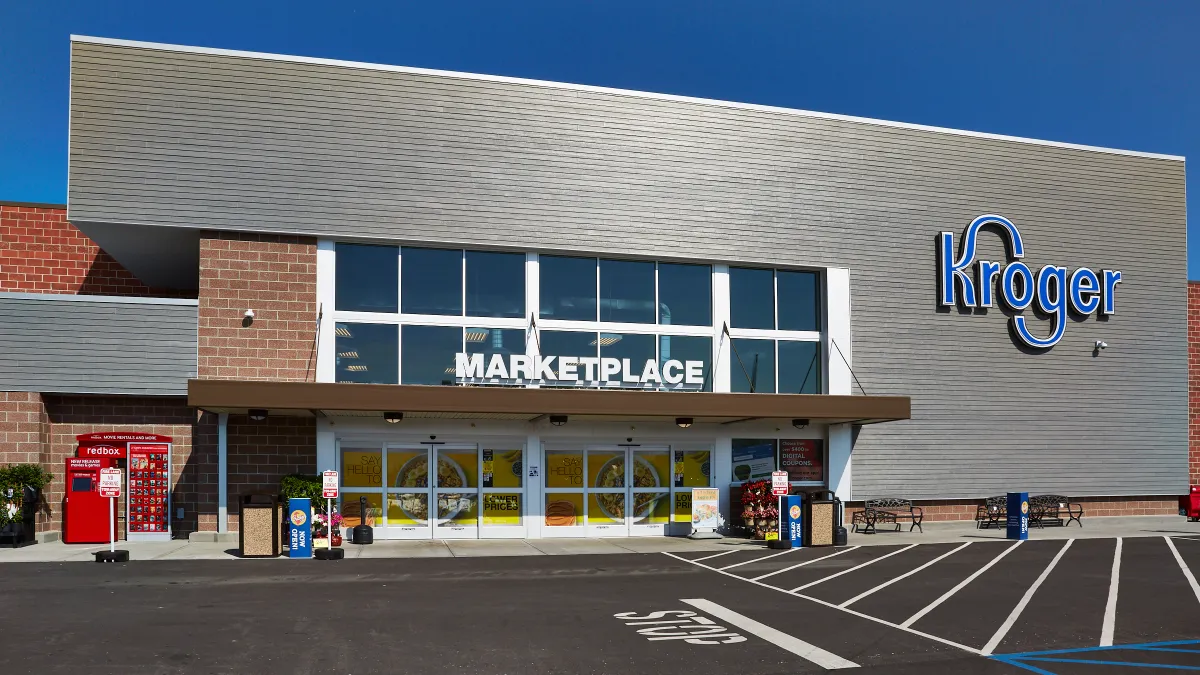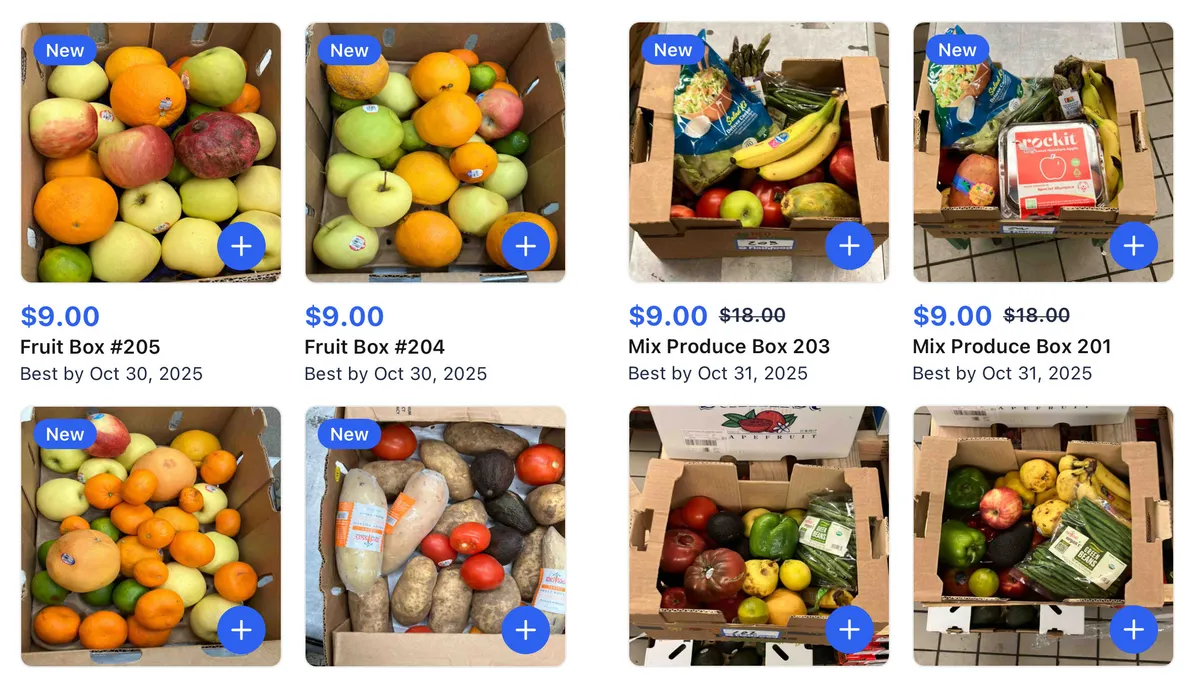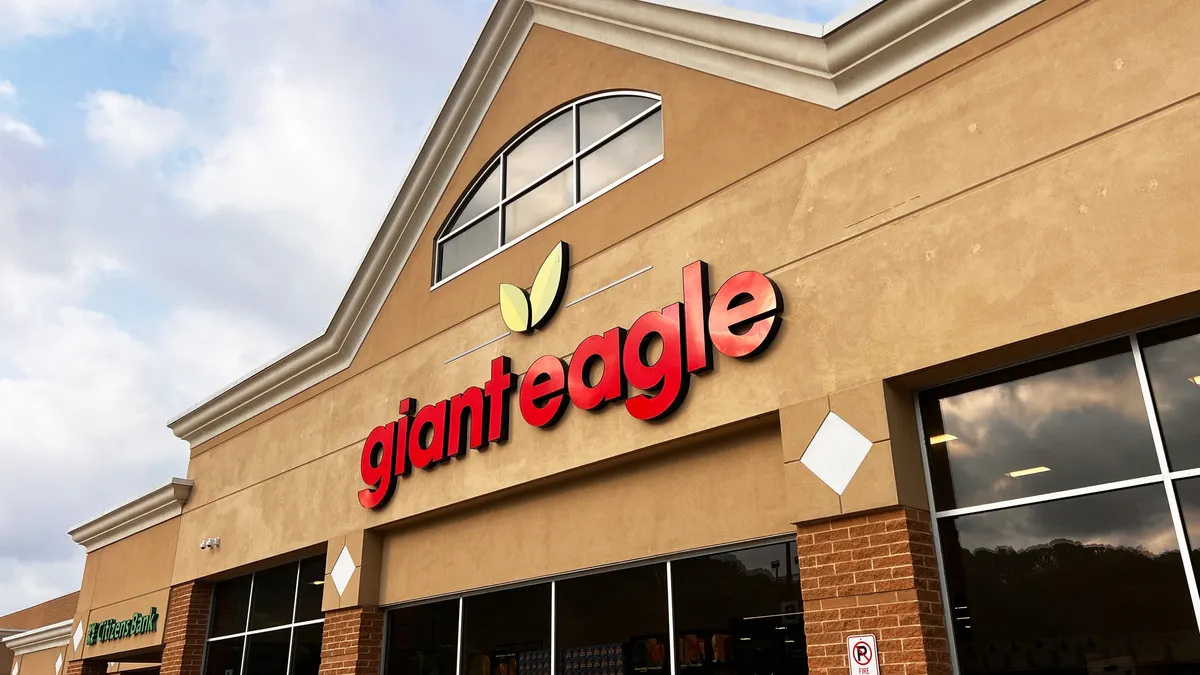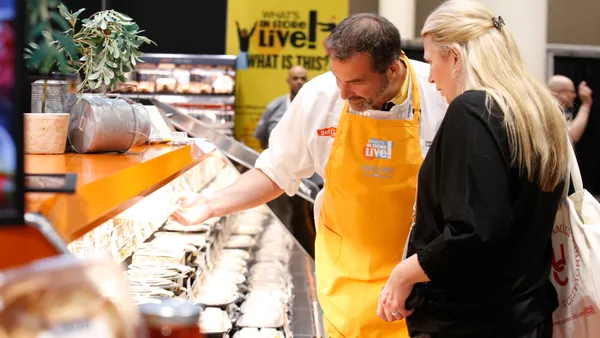Aisles Abroad is a regular feature that examines notable grocery initiatives outside the U.S.
Groceries and games can be a winning combo for boosting customer loyalty, Samkaup, an Icelandic grocer, has found.
Samkaup scored a big win with its recent addition of in-app games, like spin-to-win, that give loyalty members the chance to win free products as prizes when that week’s game becomes available, said Gunnur Líf Gunnarsdóttir, executive director of retail operations at Samkaup.
Samkaup recorded 78,204 game attempts from December 2024 to January 2025, with 3,581 users winning prizes. In January, the grocer added more games to its roster.
The gamification has created a new retail media revenue stream for Samkaup, which operates numerous grocery banners such as Krambúðin and Nettó. Participating brands can choose which type of game matches their product offerings and then provide free goods as prizes. After people win a product, they tend to keep buying it, Gunnarsdóttir said.
For shoppers, the interactive games, which rotate weekly, tap into desires for free products and “to play a little bit,” Gunnarsdóttir said.
“If you play for four weeks, you always win something,” she said.
While weekends are typically the strongest days for in-store business, Gunnarsdóttir attributes a recent bump in foot traffic on Mondays, Tuesdays and Wednesdays to the games due to customers coming in those days to pick up their prizes.
Winning over consumers
When Samkaup rolled out its loyalty program a few years ago, Iceland didn’t really have a culture of loyalty systems outside of airlines, and no other grocer in the country had a loyalty offering, according to Gunnarsdóttir. Now, the program has about 100,000 people signed up — roughly one-fourth the population of Iceland, she said.
The recent addition of the games stems from Samkaup’s partnership with loyalty tech company Lobyco, which began in early 2021 when the Icelandic grocer launched its loyalty app for customers. On the launch day of the first game, 4,500 users played the spin-to-win game 5,300 times, with rewards such as a dozen cans of Pepsi Max and a 50,000 Icelandic Krona credit in the grocer’s loyalty app, according to data provided by Samkaup.
The number of gameplays has since skyrocketed. From January to February of this year, users played 34,316 times — roughly six times more than the launch day — and saw a win rate of 17.7%, according to data from the grocer.
Currently, most of Samkaup’s loyalty members play the games, and those players spend roughly 90% more in-store than those who don’t play the games, Gunnarsdóttir said.

“People are playing the game again and again, and they’re seeing the brand again and again,” she noted.
To get the word out, Samkaup has in-store marketing and social media posts along with app pop-ups to alert people to the games, Gunnarsdóttir said, adding that there seems to be some word-of-mouth happening as well, given that loyalty program signups tend to increase when a new game drops.
Stateside gamification
While grocery loyalty programs have a longer history in the U.S. than in Iceland, gamification is still an emerging area for retailers stateside.
In 2023, Albertsons offered an online game during the summer to provide savings and prizes to users. In 2024, Instacart launched games such as a virtual wheel on its smart carts and Earth Fare gamified shopping through the rewards app Merryfield, letting customers earn points by interacting with fast facts, pop quizzes, quick polls and videos.
More than half (55%) of U.S. respondents said they would describe gamification as “very” or “extremely” important when engaging with grocers, and 59% said they will visit a store to redeem rewards when they win, Lobyco reported last summer based on a survey of 2,168 people. However, only 6% of consumers have played a scratch-to-win or spin-to-win game, which Lobyco attributed to the underutilization of gamification by grocers.
Unlocking the next level
Going forward, Samkaup is looking to diversify the types of participating suppliers as well as better match games with in-store themes, Gunnarsdóttir said.
On days when the grocer is promoting healthier food choices, “we don’t want to have chocolate in the game… [but instead] have something health-related” as the prize, she said.
Gunnarsdóttir sees opportunities to personalize the experience in a way that is more closely tailored to shoppers as well as to add more seasonal games.
“Overall, the games have been extremely successful,” Gunnarsdóttir said.


